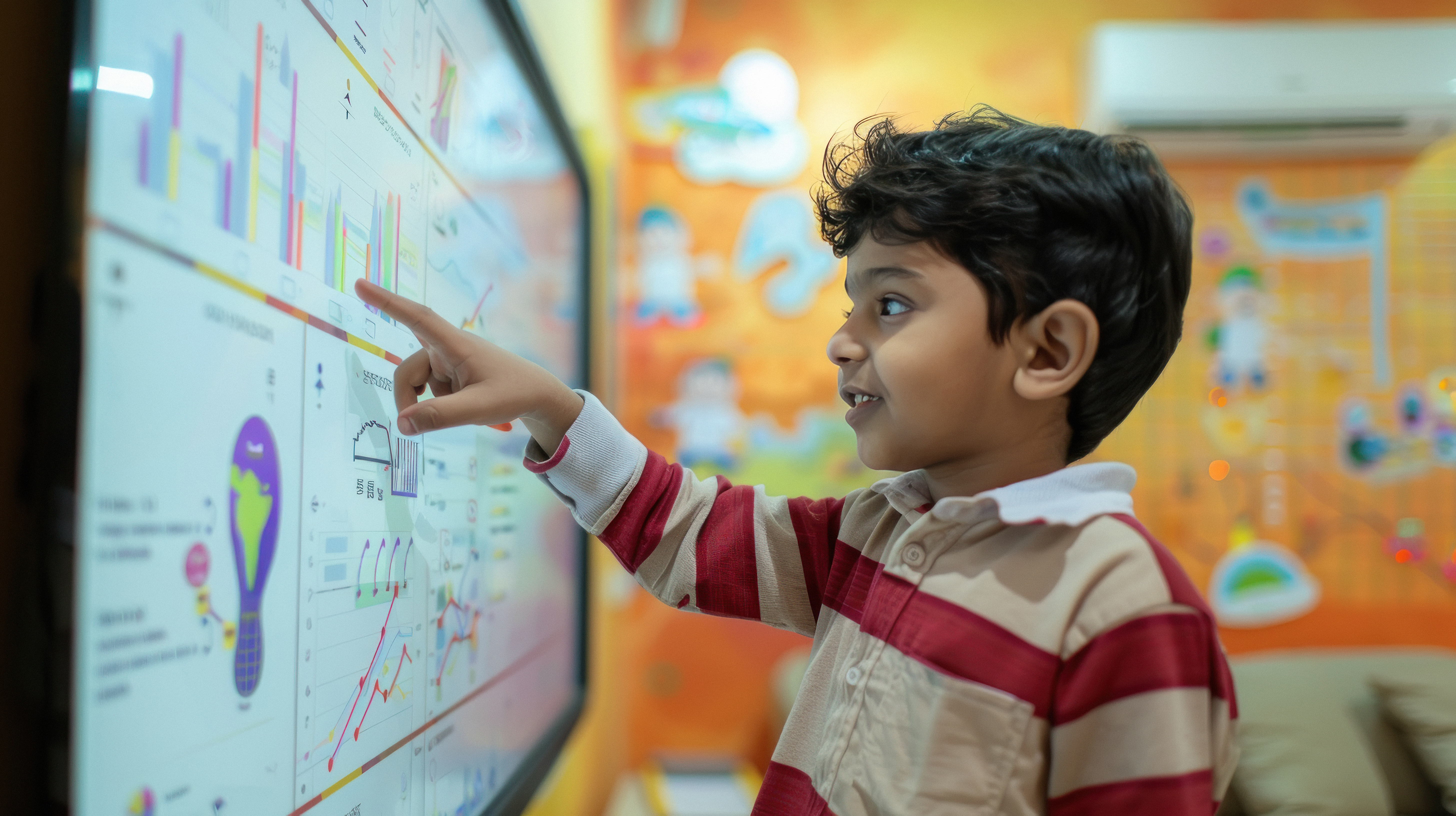Ed Tech Blog

In many classrooms, traditional assessment models place the heaviest emphasis on final outcomes—whether that’s a perfectly written essay, a well-researched science report, or a polished piece of artwork. This product-oriented approach, while useful for evaluating knowledge, often overlooks something equally important: the process that students go through to arrive at their final work. Every idea brainstormed, mistake made, and revision attempted is a crucial part of the learning journey. By focusing solely on the destination, we miss out on the story of growth, persistence, and creativity along the way.
Journey boards offer a powerful shift in how we value and celebrate student work. Rather than just showcasing what was accomplished at the end, journey boards highlight the steps students took, the decisions they made, the struggles they overcame, and the growth they experienced. These boards serve as a reflective and visual tool, helping students see their own learning unfold over time. By encouraging students to chronicle and share their process, journey boards build self-confidence, promote peer learning, and create a classroom culture that truly values learning as a journey.
What Are Journey Boards?
Journey boards are creative visual displays that document the stages of student learning. They serve as living narratives that showcase how a student approached a task, including the highs and lows, trials and errors, revisions, and key discoveries along the way. Unlike final projects that only show the polished product, journey boards reveal the “messy middle” that is often where the most growth happens.
These boards can take many forms depending on student preference, subject area, and available resources. Some may be physical boards filled with sketches, sticky notes, drafts, mind maps, and photos. Others might be digital presentations or portfolios that include videos, voice memos, scanned journal entries, or slideshows. The common thread is that they...
Read more: Journey Boards in the Classroom: A Tool for Reflective and Creative Learning

Tests can be a daunting experience for students. The pressure to perform, combined with the variety of question types and time constraints, often leads even the most capable learners to underperform. However, success on tests is not solely determined by how much content students know—it also depends on how effectively they can apply that knowledge under test conditions. By equipping students with strategic approaches to answering questions, educators can help them avoid common pitfalls and give a more accurate reflection of their understanding. The following four test-taking strategies are simple, teachable, and incredibly effective at helping students truly demonstrate what they’ve learned.
Reading Questions Carefully: The First Step Toward Accuracy
A fundamental but often overlooked strategy is teaching students the value of reading questions thoroughly. In the rush of trying to complete a test on time, students may skim over a question or misread a key part of it, resulting in avoidable mistakes. Sometimes, one small word—like "not," "least," or "all"—can entirely change the meaning of the question. If a student misses this cue, they might choose an answer that’s factually correct but contextually incorrect.
One of the best habits students can build is to read each question twice before...
Read more: Mastering Tests: 4 Essential Strategies to Help Students Confidently Show What They Know

Introducing Proficiency Days: A New Approach
Enter Proficiency Days — a refreshing and innovative approach some school districts have begun adopting to transform the end-of-year experience for students and teachers alike. Instead of letting the final weeks descend into a frantic race to submit missing assignments, Proficiency Days are designated blocks of time where students focus intentionally on demonstrating mastery of the core skills and standards they have been developing throughout the year. This deliberate shift from quantity to quality not only supports deeper learning but also helps students end their year on a positive and confident note.
Defining Proficiency Days: Focus on Mastery
Proficiency Days are dedicated sessions near the end of the academic calendar where students actively work toward proving their understanding and skills in a meaningful, focused way. Unlike traditional end-of-year practices that often allow students to submit any outstanding assignments haphazardly, Proficiency Days require students to reflect on what they truly need to master to meet academic standards. During this time, students engage in targeted assessments, projects, or performance tasks specifically designed to evaluate their proficiency on key concepts. The goal is not just to complete busywork or submit late homework but to show clear evidence...
Read more: From Stress to Success: The Power of Proficiency Days in High Schools
Unlocking Writing Success: How Cognitive Science Makes Writing Easier and More Engaging for Students

Writing is a fundamental skill that students are expected to develop across all grade levels and disciplines. Yet, for many learners, writing often feels like a daunting and frustrating challenge. It’s not uncommon to hear students say they “don’t know what to write” or feel overwhelmed by the process of getting their thoughts onto paper. However, recent advances in cognitive science provide invaluable insights into how writing instruction can be designed to align with the way the brain naturally processes information. By applying these principles, educators can make writing less difficult, which not only improves students’ writing skills but also increases their motivation and engagement as learners. When writing feels more manageable and meaningful, students are more likely to develop confidence, persistence, and a genuine interest in communication.
The Cognitive Load of Writing and Working Memory Limits
One of the key reasons writing is challenging for many students is because it is a cognitively demanding task that requires juggling multiple mental processes all at once. To write well, students must come up with ideas, organize those ideas logically, apply correct grammar and spelling, and continuously monitor and revise their work—all while considering the needs of an imagined audience. Cognitive science...

In today’s education landscape, integrating technology into the classroom is no longer a luxury but a necessity. When used thoughtfully, technology can enhance teaching, foster student engagement, and prepare learners for the digital world. Yet, even with the best tools at their disposal, many teachers hesitate or struggle to incorporate technology effectively. This hesitation often stems from feelings of uncertainty, lack of support, or insufficient involvement in the technology adoption process. To bridge this gap, schools and educational leaders need a structured approach that empowers teachers to confidently and meaningfully implement technology. Below is a comprehensive five-step plan designed to encourage teachers to embrace technology in their lessons, ensuring they feel involved, supported, and motivated throughout the process.
Involving Teachers Early Builds Ownership and Trust
One of the most important foundations for successful technology integration is to involve teachers early in the decision-making process. Far too often, schools select new tools or platforms without consulting the educators who will ultimately use them. This top-down approach can leave teachers feeling disconnected or even resistant to change. By engaging teachers from the outset—whether through surveys, focus groups, or pilot programs—schools communicate respect for their professional expertise and acknowledge the realities of classroom...
Read more: Empowering Educators: A 5-Step Plan to Integrate Technology in the Classroom

Teaching is often thought of as a one-way street where knowledge flows from teacher to student. However, anyone who has spent time in a classroom understands that teaching and learning is much more of a two-way street. In fact, students can be among the greatest teachers we have. Over the course of a school year, teachers come to realize that their students teach them valuable lessons—not only about education but about life itself. These lessons span a wide range of themes including curiosity, resilience, empathy, adaptability, communication, and joy. As we reflect on the past year, it becomes clear that the learning journey is not exclusive to students; educators gain insight, inspiration, and growth from their students every day.
Rediscovering Curiosity and Wonder
One of the most striking things teachers learn from their students is the power of curiosity and wonder. Students often approach the world with fresh eyes, asking questions that may seem simple or even challenging. Their natural inquisitiveness pushes teachers to revisit assumptions, deepen their own knowledge, and sometimes even explore new ideas alongside their students. The enthusiasm and eagerness to understand the world around them serve as a powerful reminder that learning should be a lifelong...
Read more: Learning Together: Valuable Lessons Teachers Gain from Their Students
